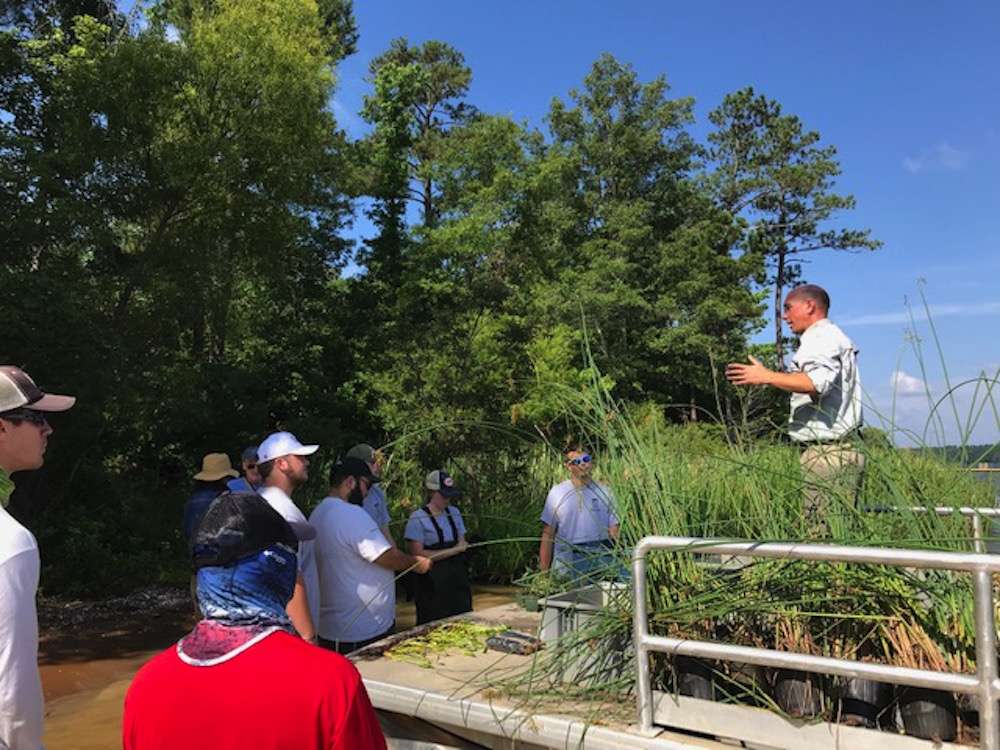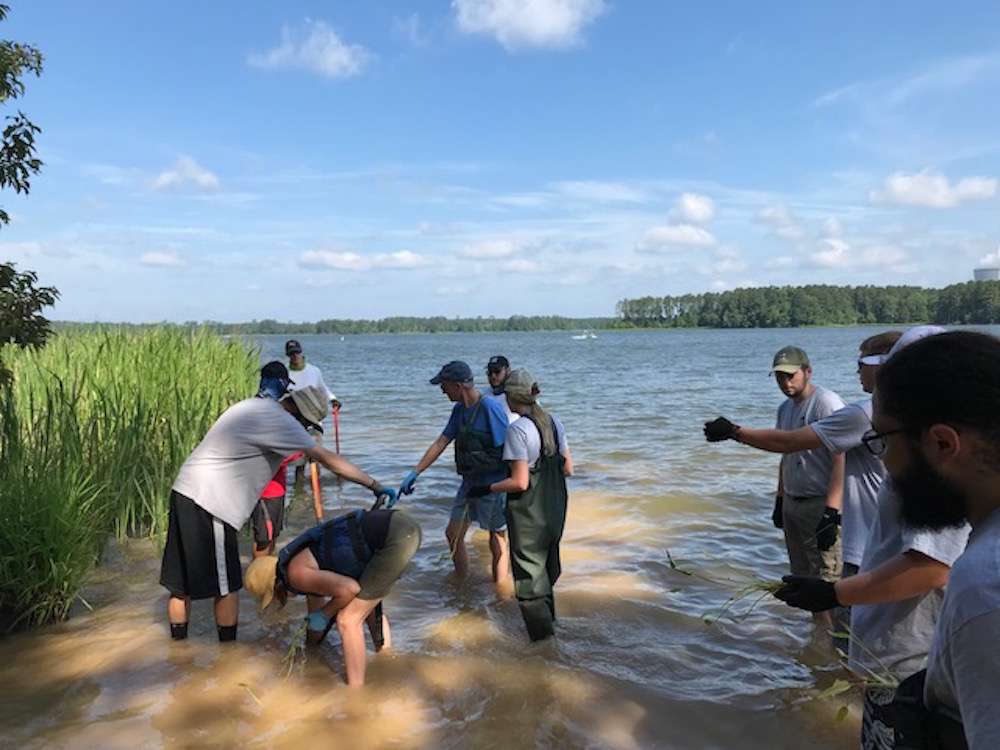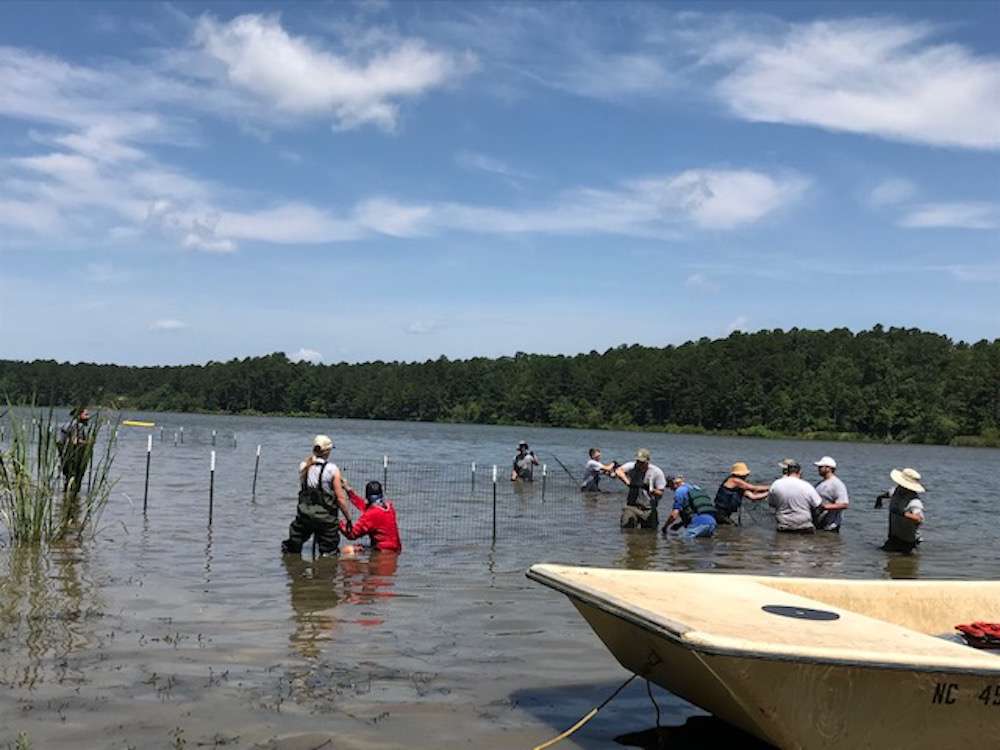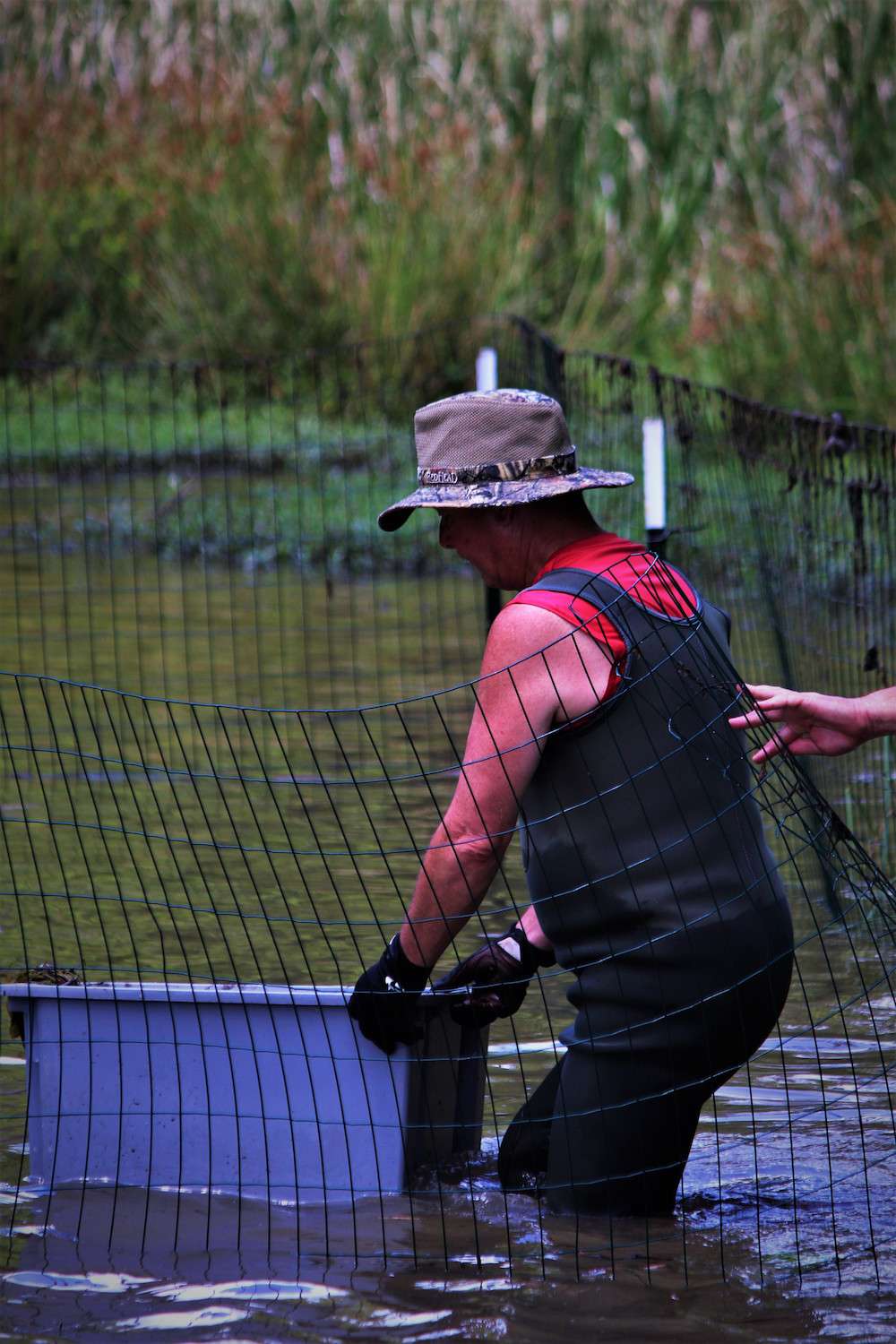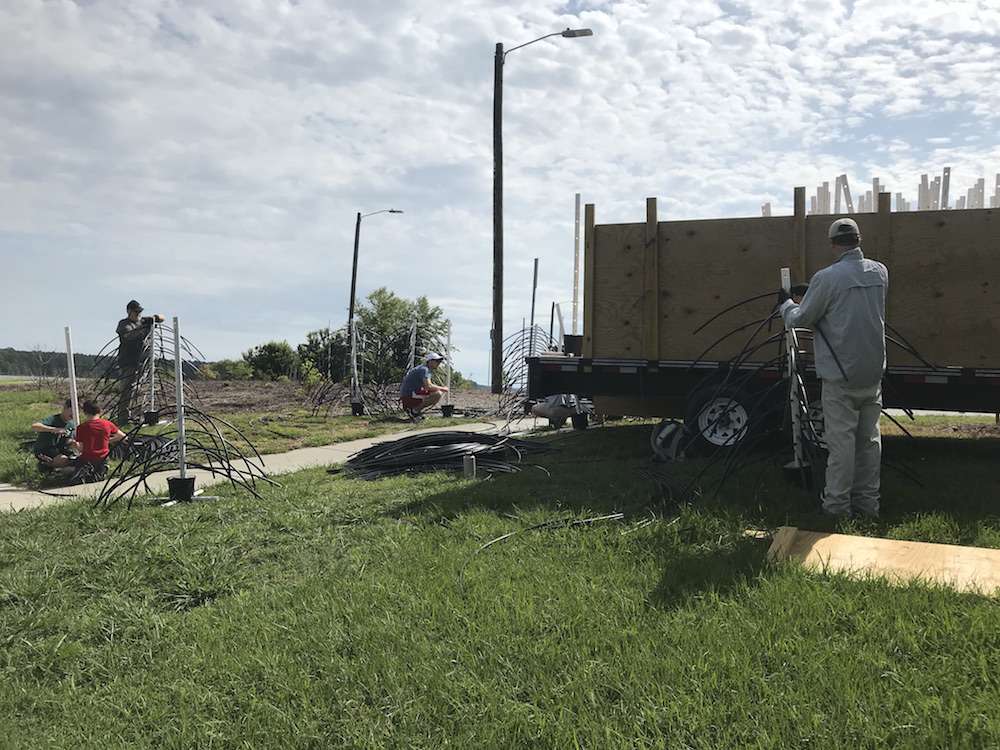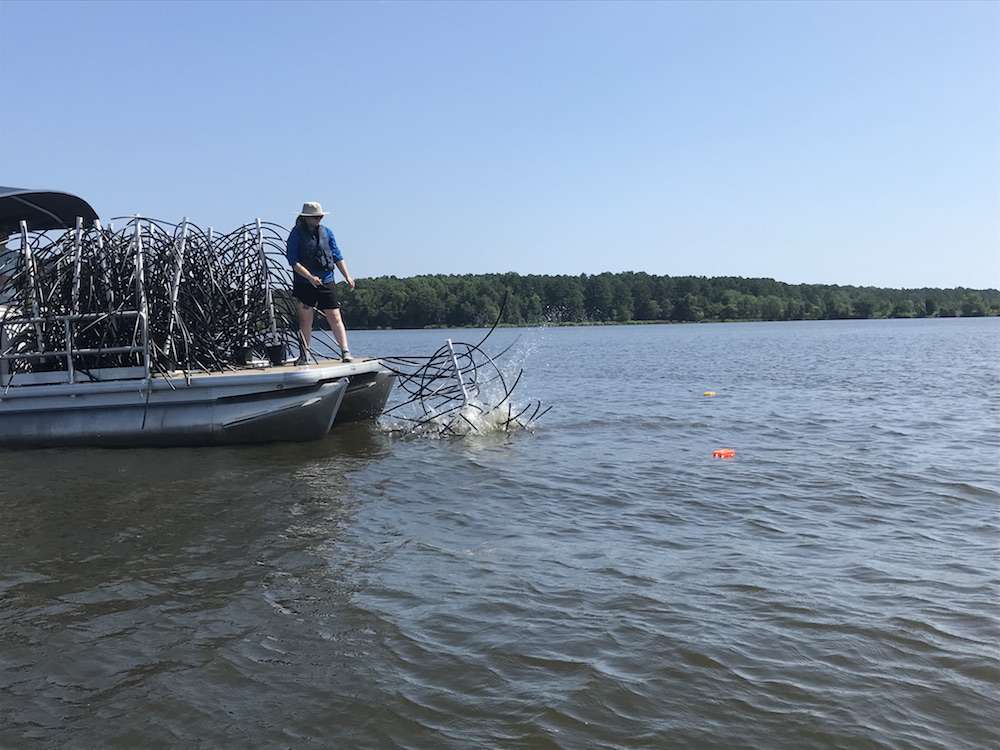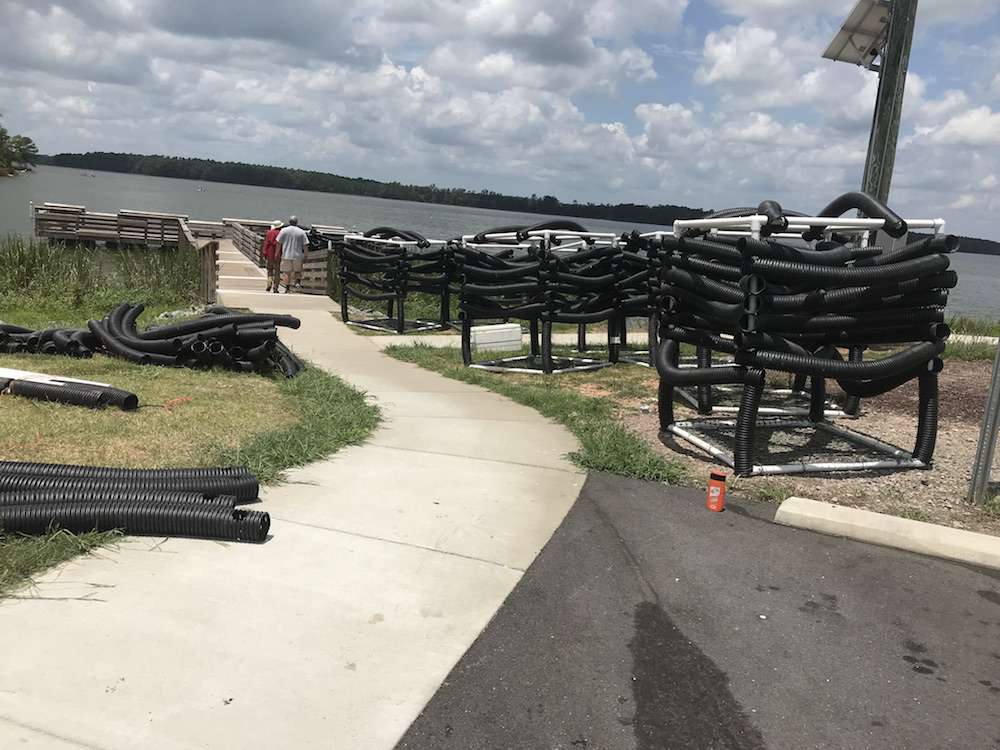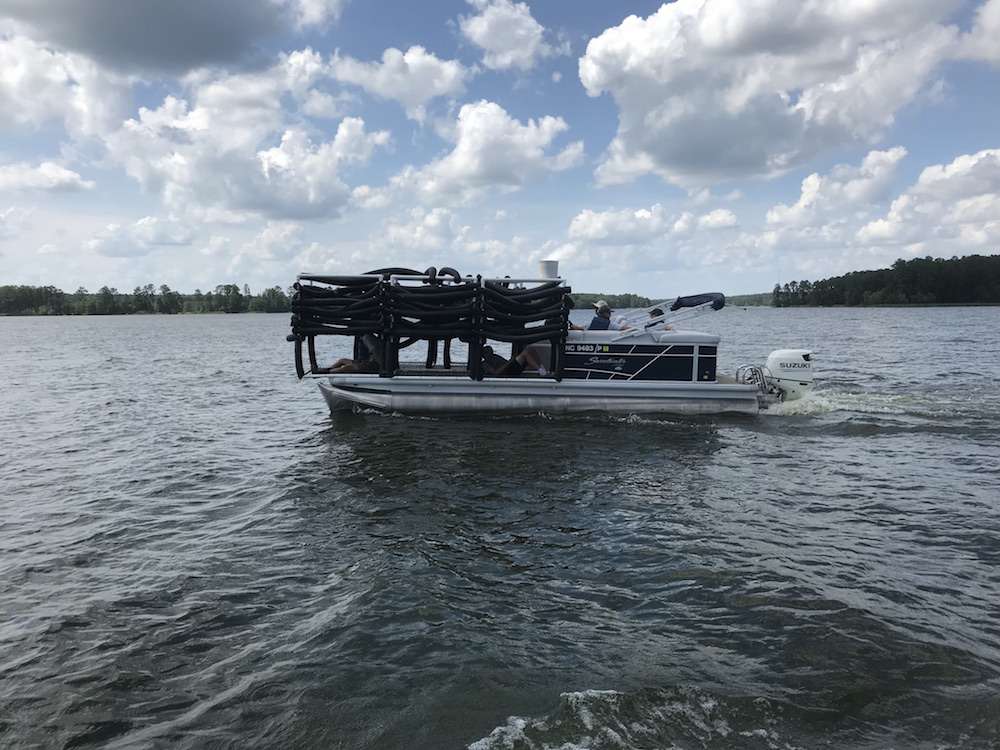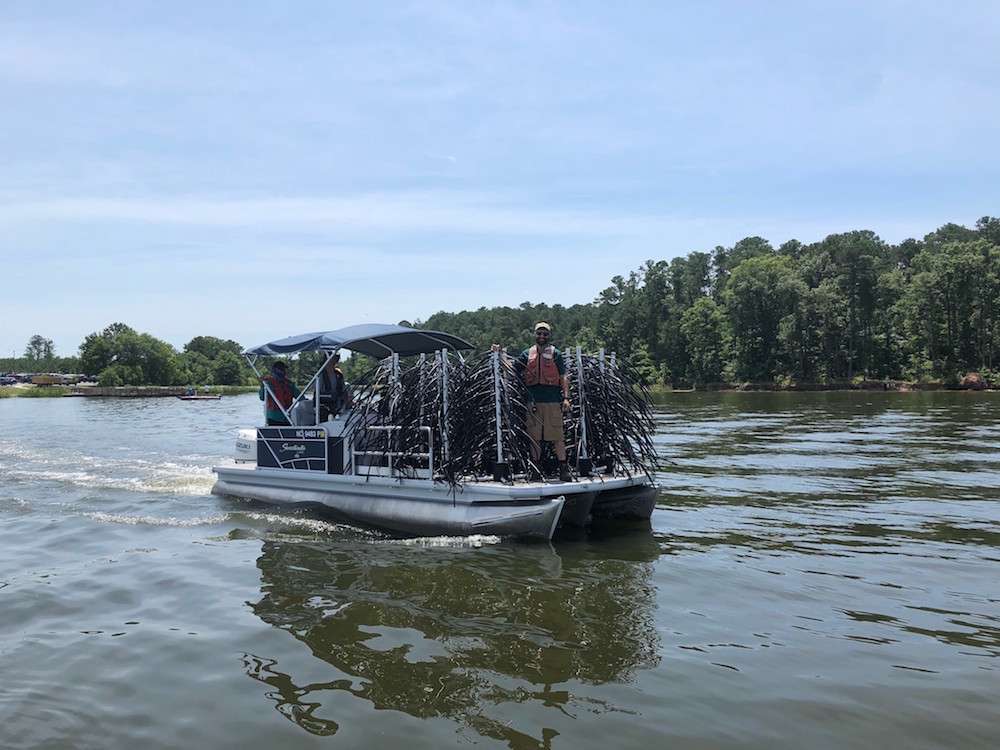
BUCKHORN, N.C. — Volunteers joined with the North Carolina Wildlife Resources Commission (NCWRC) this past summer to continue a long-term habitat enhancement program on Shearon Harris Reservoir, commonly recognized as the state’s premier bass fishery. With financial assistance from the federal Sport Fishing Restoration Program, workers planted native aquatic vegetation as well as installed artificial structures.
“We had good volunteer turnout and two good weeks of work,” said biologist Clint Morgeson, who noted that Bill Frazier, North Carolina’s B.A.S.S. Nation Conservation Director, was an important part of the effort.
“Not only has he been involved in the Harris Lake Stakeholder Group, Bill helped build exclosures and plant vegetation,” Morgeson added.
When the habitat work began in 2018, Frazier said, “One of the main goals was to get input from fishermen. We did. Most of the best features we scouted already had some fishermen’s ‘enhancements’ on them. NCWRC got a lot out of the learning experience.”
The North Carolina biologist echoed that appraisal and said that it continued in 2019. “Where we put habitat came from anglers,” he said. “We believe that those decisions should be made by people using it (Harris Lake) rather than managing it.”
The agency began habitat enhancement just before the Division of Water Resources started a hydrilla control program, which included 4,000 grass carp, as well as herbicides. Because of so many boats going in and out of Harris and its proximity to other fisheries, resource managers feared the invasive plant might be spread “where the long-term environmental and economic impacts can be devastating,” according to NCWRC.
At Harris, meanwhile, the fast-growing plant favored by both bass and bass anglers was on the decline naturally before control efforts began.
“In the 90s, it was like a bathtub topped out with hydrilla,” Morgeson said, adding that it had diminished to 942 acres for the 4,100-acre impoundment by 2015 and, by 2018, it was down to 230 acres.
And that’s not necessarily a bad thing, according to Frazier.
“Harris has long been known as a trophy bass fishery, but gets characterized for the role of vegetation inaccurately,” he said. “The guides don’t advertise it, but spend most of their time offshore.
“That is where the bigger fish are caught and the NCWRC project very strongly favored putting artificial habitat in these areas.”
In keeping with that, Morgeson suggested anglers might want to “adjust their tactics.”
This past summer, staff and volunteers, who included workers from Harris Lake County Park and North Carolina State Bass Pack, placed 150 polytrees, 100 spiderblocks and 20 Shelbyville cubes, variations of the original Georgia cube.
“We used the Fishing Trail of North Carolina concept to set them at the best possible locations on features at or above the thermocline,” said Frazier, adding that locations are available on the NCWRC website.
They also planted vegetation, as well as built and placed exclosures to keep grass carp and turtles from eating it. Morgeson estimated that 900 plants of “nine to10” species were utilized, including Illinois pondweed, spatterdock, and bulrush within the exclosures and water willow and pickerel weed outside.
In 2018, the agency reported, “Staff initially planted native vegetation at 14 sites and installed 50 artificial fish attractors in the lake. Biologists hope to establish approximately 30 acres of artificial and natural structures and approximately 1 acre of founder colonies of native vegetation plants once the project has been completed.”
Meanwhile, news already is positive, according to Morgeson, who said he’s receiving reports that fish are showing up on attractors. He added that he’d like for more anglers to use social media to let the agency know about their experiences. He also welcomes suggestions for habitat placements.
Biologist Clint Morgeson can be contacted at (919) 707-0339 or clinton.morgeson@ncwildlife.org. Here’s a link to NCWRC fish attractor map.
